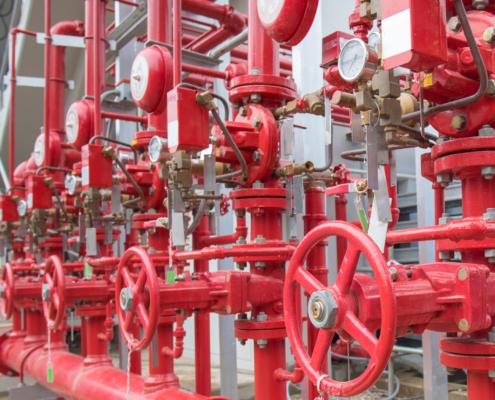Notifications

7 minutes, 41 seconds
-9 Views 0 Comments 0 Likes 0 Reviews

When it comes to protecting your property and ensuring the safety of your occupants, having a dependable fire protection system is non-negotiable. One of the most critical components of any fire safety system is the fire pump. A professionally designed and properly executed fire pump installation can be the difference between a controlled emergency and a devastating disaster.
Fire pumps are used to maintain adequate water pressure throughout a building’s sprinkler system or standpipe system. They’re especially important in high-rise buildings, industrial facilities, warehouses, and locations where water supply pressure is insufficient. If you’re a property owner, facilities manager, or developer, understanding the essentials of fire pump installation will help you stay compliant, protect lives, and minimize property damage.
Fire pumps ensure that your fire protection systems function effectively even during a power outage or when the municipal water supply can’t meet demand. During a fire, water pressure can drop drastically, making sprinklers and hoses ineffective. A fire pump boosts the pressure and maintains consistent flow, ensuring every corner of your building is covered.
Beyond safety, proper fire pump installation is often a legal requirement under local and national fire codes. Non-compliance can result in hefty fines, insurance complications, or worse—loss of lives and assets.
Before installation, you’ll need to determine the right type of fire pump for your building. Options include:
Horizontal split case pumps: Most common, ideal for large commercial properties with easy maintenance access.
Vertical turbine pumps: Suitable when water comes from underground tanks or wells.
End suction pumps: Typically used in smaller installations where space is limited.
Vertical in-line pumps: Compact design, often used in high-rise buildings.
Your choice depends on factors like water source, building height, system demand, and available space. Working with a certified fire protection engineer ensures the right pump is selected for your local conditions and building layout.
A comprehensive site assessment is the first step. Technicians evaluate water supply, pressure requirements, and building design. Local fire codes and standards like NFPA 20 also guide this assessment.
Once the assessment is complete, detailed design and engineering plans are created. These plans must incorporate structural requirements, electrical connections, piping layouts, and accessibility for maintenance.
A fire pump requires a solid foundation to prevent vibrations and ensure operational stability. The pump is mounted securely, aligned precisely, and anchored to reduce wear and tear.
Pipes and valves are connected to integrate the pump with the building’s fire protection system. Suction and discharge pipes must be correctly sized to maintain the required flow rates.
Fire pumps often require a dedicated power source or backup generator. Control panels are installed to monitor pump performance, trigger alarms, and allow manual or automatic operation as needed.
Before going live, rigorous testing is essential. Flow tests, pressure tests, and alarm system checks confirm that the system meets all safety and performance standards.
Every city or region has unique building codes, environmental factors, and inspection protocols. That’s why choosing a local expert for fire pump installation is crucial. Local professionals understand municipal water systems, regional weather impacts, and area-specific compliance requirements.
Additionally, working with a local team means faster response times for maintenance, repairs, and emergency support. For property owners focused on long-term reliability and local compliance, this local expertise offers invaluable peace of mind.
A fire pump installation is not a set-it-and-forget-it solution. Regular maintenance ensures the pump remains in peak condition. This includes routine inspections, lubrication, testing controllers, and checking for leaks or corrosion.
NFPA 25 outlines inspection, testing, and maintenance requirements for fire pumps. Engaging a qualified service provider to perform these tasks can help prevent costly failures and keep your system ready to perform during an emergency.
A successful fire pump installation is a critical investment in safety, compliance, and property protection. When planned and executed correctly, it offers reliable fire protection and peace of mind for years to come.
Whether you're upgrading an existing system or installing a new one, always prioritize professional guidance, local expertise, and adherence to fire safety standards. Remember, when it comes to fire safety, there is no room for shortcuts.
A fire pump is a part of a fire sprinkler or standpipe system that increases water pressure to ensure adequate flow during a fire. You need one if your building's water supply can’t maintain enough pressure on its own, which is common in high-rise structures or areas with low municipal water pressure.
The timeline depends on building size, system complexity, and local permit approvals. Typically, it can take from a few weeks to a few months, including assessment, design, and final testing.
According to NFPA 25 standards, fire pumps should be tested weekly for a no-flow (churn) test and annually for a full-flow performance test. Regular inspections help catch issues before they lead to system failure.
While general contractors may handle some building systems, fire pump installation requires specialized expertise and licensing. Always work with certified fire protection contractors to ensure compliance and safety.

